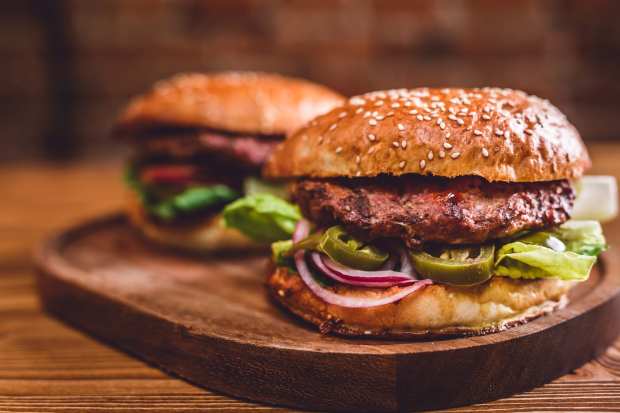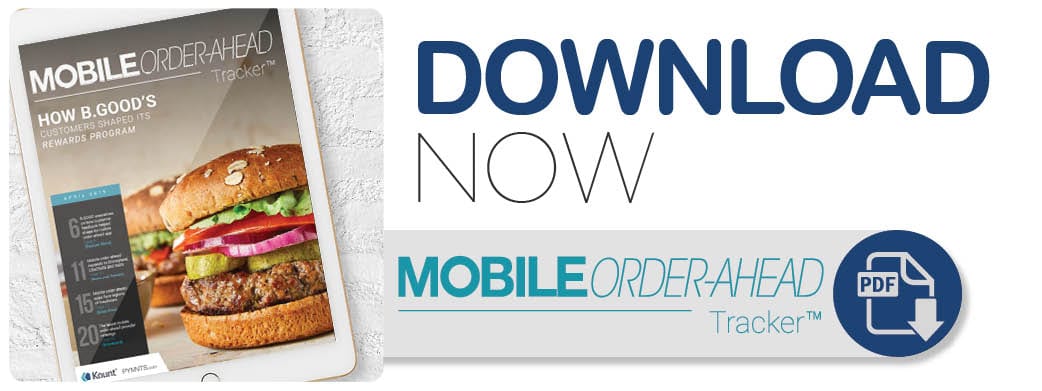How B.GOOD’s Customers Shaped Its Rewards Programs

When it comes to food, customers want what they want. In the mobile order-ahead field, listening to customers’ needs can give a QSR the competitive edge it needs to stand out from the pack. In the latest Mobile Order-Ahead Tracker, B.GOOD’s Brent Feldman explains how the fast-casual chain incorporated more than six years of customer feedback, including a complete redesign of its loyalty program from a surprise-and-delight structure to a points-and-rewards system.
 Customers have never been more spoiled when it comes to deciding where to eat. There is a plethora of quick-service restaurant (QSR) mobile apps and loyalty programs in today’s market, and restaurants are vigorously competing to discover the best ways to entice customers. B.GOOD, a Boston-based fast-casual eatery that serves burgers, salads, bowls and other farm-to-table foods, thought that the best way to bring customers in was to ask them exactly what they want. This was the guiding philosophy for the second iteration of B.GOOD’s mobile app and rewards program, which launched in April and had customer feedback at the center of its design.
Customers have never been more spoiled when it comes to deciding where to eat. There is a plethora of quick-service restaurant (QSR) mobile apps and loyalty programs in today’s market, and restaurants are vigorously competing to discover the best ways to entice customers. B.GOOD, a Boston-based fast-casual eatery that serves burgers, salads, bowls and other farm-to-table foods, thought that the best way to bring customers in was to ask them exactly what they want. This was the guiding philosophy for the second iteration of B.GOOD’s mobile app and rewards program, which launched in April and had customer feedback at the center of its design.
The original rewards program
B.GOOD’s loyalty program debuted in 2013, 10 years after the chain was founded, and utilized a surprise-and-delight email marketing strategy. Customers received unanticipated rewards in their inboxes every seven to 15 visits — a structure that was also used for the mobile app, which launched in 2015. Users’ opinions began to shift, however, as the app grew in popularity.
“People wanted more transparency around how they could unlock various rewards and what they needed to get there,” said Brent Feldman, B.GOOD’s chief marketing officer.
Customer feedback leads to revamped features
The new mobile order-ahead app took this and many other customer requests into account, the most significant being the introduction of a points system. Customers enrolled in the loyalty program earn one point for every dollar spent and can redeem points for a variety of rewards, such as a free side dish or entree. B.GOOD didn’t completely get rid of its surprises, though. Double-point days occur semiregularly and users can occasionally find limited time offers exclusively on the app.
Personalization was also important to the restaurant’s customers, who range from omnivores to vegans. It was important, Feldman said, to take dietary restrictions into account.
“If you’re a vegetarian, you might not appreciate a burger offer,” he explained.
The app now allows users to input foods they prefer not to eat, such as dairy, soy, meat and gluten, among others. Once their food preferences have been saved, the rewards system automatically disqualifies foods containing those products from appearing as a reward.
B.GOOD also wanted to stand out from other mobile order-ahead apps by emphasizing its involvement with community outreach programs, food banks and other charities. To this end, the eatery added a donation button to the app, allowing users to donate their loyalty freebies to one of 25 local charities, including the Boys and Girls Club, the Community Harvest Project and Nourishing the North Shore.
“We try to get involved in our communities and make them better places … by giving back,” Feldman said. “We think that’s pretty unique and something our guests are looking forward to utilizing.”
Future features
B.GOOD hopes to make the app even more user friendly by implementing new, popular payment options. “As [consumers] continue to explore and adopt alternative payment methods like Apple Pay and others, we, too, will continue to explore how we can integrate them into our app,” said Austin Brinsom, B.GOOD’s vice president of information technology and analytics.
The chain is also altering its storefronts to better accommodate mobile orders. Many locations, especially those in urban locations, now have dedicated pickup shelves — something the company plans to integrate at all 63 of its restaurants.
“We really do think we’ve answered a lot of guests’ needs in terms of wanting transparency, personalization and flexibility,” Feldman said. “Hopefully we’re giving our guests a reason to come to us more often.”
B.GOOD hopes that by focusing on what customers want, its new app and rewards system will help it stand out from the fast-casual pack.
